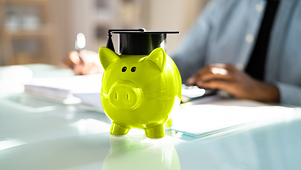When the clock strikes midnight on December 31, everyone starts the year with the best intentions and big goals. They’re going to work out more, lose 10 pounds, save more money, spend more time with family and friends, get a new hobby, stop procrastinating – the list goes on.
According to a survey from Forbes in 2023, mental health and fitness were the top resolutions for 2024. And despite the best of intentions, only 1% of participants kept at their goal for 11 or 12 months – most gave up in four months or less.
New Year’s resolutions are a fun way to set a goal and start the new year off right, but you don’t have to wait until January 1st to take action. Successful goals require a thoughtful, strategic process, and winter break is an ideal time to reflect, reset, and start planning for 2026.
Should I Start Goal Planning Over Winter Break?
Absolutely! In general, winter is a slower time – fewer vacations, events, and running around than summer, less-hectic work schedules or busy school time, and a tendency to stay inside and hibernate.
Instead of cramming resolutions into the final hours of December 31 as the clock winds down, you can use the slower pace of the holidays to plan strategically. You can take time to brainstorm and structure your action plan now as a “head start” and reduce the pressure that often comes with January and sticking to your resolution.
Reflect on 2025
Before you look ahead, take stock of the year you’re leaving behind. Reflection is an important part of setting goals. You can evaluate what worked, what didn’t, and what matters most moving forward.
Ask yourself:
- What were my biggest goals for 2025?
- Did I achieve my goals or did I pivot to new opportunities?
- What challenges or barriers slowed me down?
- What habits or strengths kept me moving forward – and what held me back?
For example, maybe you planned to complete five higher-education courses, but you only finished three. That’s not failure – it’s data. You learned something about your priorities, pace, study habits, and how much you can handle. Use those lessons to adjust your expectations and set realistic goals for 2026.
Setting Goals for 2026
Time to look at the year ahead. Where do you want to be at the end of 2025?
Do you want to finish a degree? Build a healthier fitness routine? Upskill for your career? Eat better? Once you identify your vision, break it down into actionable steps.
SMART Goals
Each goal needs to be Specific, Measurable, Achievable, Relevant, and Time-Bound (SMART). Instead of saying, “I want to be healthier,” your goal should be something like,” I will complete three 30-minute cardio workouts each week by March.”
Here’s an example of common goals with a SMART framework:
| Goal Type | Goal | SMART Version | First Step |
|---|---|---|---|
| Education | Finish a course | Complete three courses by July 2026 | Enroll in first course over winter break |
| Wellness | Get healthier | Walk 5,000 steps at least four days a week by March 2026 | Download a step-tracking app |
| Career | Improve job skills | Earn a project management certificate by October 2026 | Research and select a certificate program |
| Personal Growth | Read more books | Read 12 books by December 2026 | Choose first title and schedule time to read each day |








































